REGULAR HOURS: TUESDAY-THURSDAY 12-6PM // FRIDAY & SATURDAY 12-8PM // SUNDAY 12-5PM // CLOSED MONDAYS
EXTENDED HOLIDAY HOURS: OPEN MONDAY // FRIDAY TO TUESDAY OPEN UNTIL 8p // NYE 11a- 5p // CLOSED 1/1 and 1/2
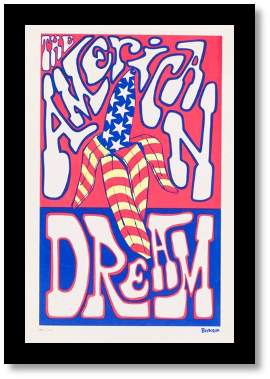
Click here to read the PDF-formatted version
“The New American Dream”
A rare chance to discover the wines of these new “travelling winemakers”
For three decades, a generation of French winemakers has crossed the Atlantic to settle in the American vineyard. Their journey is neither the result of chance nor of simple economic exile: it reflects a combination of French winegrowing tradition, entrepreneurial audacity, and curiosity for new terroirs, fully embracing the concept of the “American Dream.”
Most of these winemakers come from prestigious French wine regions and often from long lineages of winemaking families. They grew up in a world where the notion of terroir is central, but also where the rules and traditions imposed by the controlled appellation structures (INAO) seemed to them a brake on freer and more experimental visions, particularly regarding adaptation to new environmental and climatic standards. All are graduates of schools specialized in viniculture and viticulture, where they acquired solid technical foundations. Many of them went to work in Australia, New Zealand, South Africa, or Chile before settling permanently in the United States, where their academic background and family land experience allowed them to compare, analyze, and identify under-exploited terroirs in the vineyards of the New World. But their profile is not limited to that: they are motivated by freedom and the exploration of new terroirs, where they can experiment with new grape varieties, new planting densities, or winemaking techniques without coming up against strict and rigid rules. They are also attracted to soils still little exploited, where the vine must “struggle,” and where they can reveal a unique signature of the concept of “Sense of Place.” These French winemakers export traditional know-how while adapting to American conditions, favoring singular parcels, analyzing soils, and often practicing biodynamics, organic, or regenerative agriculture. They implement precision viticulture with particular attention to soil work, cover cropping, pruning adapted to the climate, and reasoned irrigation. Their names are Philippe Cambie, Benoît Touquette, Luc Morlet, Christophe Baron.
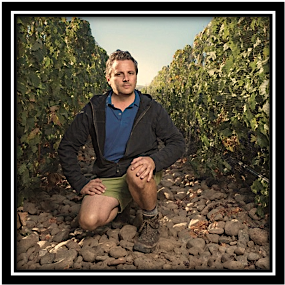
By highlighting atypical terroirs (basaltic soils, arid hillsides, marginal climates), they contribute to the stylistic evolution of American wines towards more finesse, natural acidity, and drinkability, in contrast with the “over-extracted” styles of the 1990s-2000s. Their actions also influence a new vision and new practices of American viticulture. They are the pioneers of this “New California Wine.”
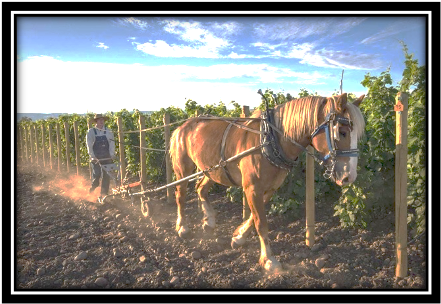
Cayuse
In the American wine landscape, few figures are as singular as Christophe Baron, born in Champagne, who made the stones of Walla Walla speak as much as the wine critics.
Born in Charly-sur-Marne, Christophe Baron is the heir of a line of Champagne winemakers dating back to 1677. As a child, he watched his father and grandfather work the family plots, where he learned the basics of viticulture. After viticultural studies in Burgundy, he honed his skills for a few years on French terroirs. But already his mind wandered: he dreamed of elsewhere, of new landscapes, of virgin terroirs to explore. After stays in Australia and New Zealand, and a short internship in 1993 in the state of Washington, he turned his attention to Oregon, particularly the Willamette Valley, famous for its pinot noir, a grape variety close to his heart and his origins.
But it was during this period that, on a visit to the Walla Walla Valley, he had a “Love at first sight” (Coup de foudre) for a stony parcel, the vestige of an ancient riverbed. These stones and this landscape reminded him of Châteauneuf-du-Pape and their extraordinary influence on the Rhône’s mythical grape varieties. Where many saw only an inhospitable field, Christophe perceived a unique potential. In 1997, through his singular vision, “Cayuse Vineyard” (French word for “stones”) was born, where he planted his first vines of Syrah, Grenache, Mourvèdre, and Tempranillo.
Biodynamics and respect for life
Christophe Baron did not content himself with planting vines: he wanted to create an ecosystem. As early as 2004, Cayuse Vineyard became one of the first properties in the state of Washington to be certified biodynamic. The vines are worked by horse, compost is produced on site, and the whole farm functions as a living organism. This approach, still marginal in the United States at the time, reinforced his reputation as a pioneer.
The vineyard is located on a terroir nicknamed The Rocks, today recognized as an AVA in its own right (The Rocks District of Milton-Freewater), where the soils are made up of alluvial deposits of volcanic cobbles from Miocene lava flows and the Missoula glacial floods. Poor in organic matter, these soils force the vine to dig deep to find water and nutrients, giving the wines their unique mineral and saline signature.
The plantings, at relatively high density for the region (about 1,800 to 2,000 vines/acre), are dominated by Syrah, which expresses singular aromatic profiles: black olive, smoked bacon, beef blood, violet, and hot stone. Yields are deliberately low (25–30 hl/ha). Water management is minimal thanks to deeply rooted vines: irrigation, used only as a supplement, is often stopped at the beginning of véraison.
All harvesting is done by hand, in small crates, with strict parcel sorting. Vinification is carried out with indigenous yeasts, through spontaneous fermentations. Christophe practices partial destemming or whole cluster fermentation depending on the vintage. Macerations are long, with carefully measured manual punch-downs and slow, respectful extractions to preserve the elegance of the wines.
Aging takes place in French barrels, with a moderate proportion of new oak (10–20% on average), over 18 to 24 months depending on the cuvées. No systematic fining or filtration is done, to preserve the natural texture and aromatic complexity.
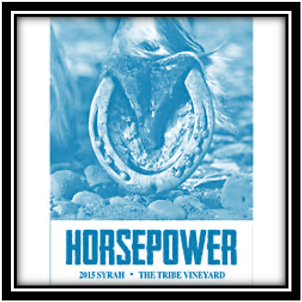
Horsepower Vineyards
If Christophe set new standards with his wines from Cayuse Vineyard, he continued to explore, challenge, and experiment. His vision of winegrowing purism and his belief in the strength of nature and its ecosystem pushed him, in 2011, to create Horsepower Vineyards, where he pushed the concepts of density and animal traction even further.
The plots are planted at more than 9,000 vines/ha and worked exclusively with draft horses, reminiscent of the ancestral practices of his family in Champagne. The result is wines of aromatic depth and velvety texture, while showing moderate alcohol levels and low pH, reflecting the natural freshness of the stony soils.
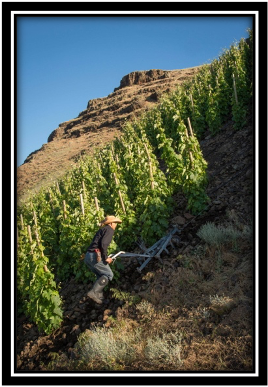
Hors Catégorie Vineyards
Hors Catégorie is a micro-vineyard of 1.2 ha, the first to be planted on the steep slope along the north fork of the Walla Walla River. Hidden in the foothills of the Blue Mountains, this is where the north fork converges with the river, where syrah vines cling to the hillside beneath jagged cliffs and surrounded by rocky outcrops.
Here, the roots of the vines struggle to feed in fractured basalt. It is a rare terroir, unique in America, where climate, exposure, and topography create an incomparable vineyard. This combination of expressiveness, power, and weightlessness is rare in American Syrah, making it a truly “hors Catégorie” vineyard.
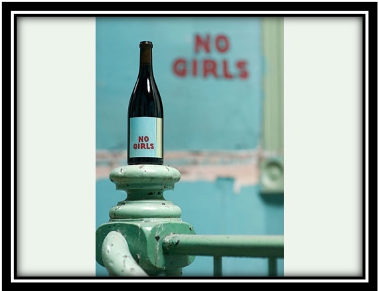
No Girls
The first vintage of No Girls was 2008, the result of a collaboration between Christophe and his General Manager, Trevor Dorlan. These wines come from the La Paciencia vineyard, planted between 2003 and 2005.
The name “No Girls” has nothing misogynistic about it. It refers to a sign Christophe found on a building he had purchased in downtown Walla Walla: a former brothel. In the 1960s, the sign had been installed to indicate that the house of ill repute was no longer in operation. This inscription became the estate’s label, a photograph of the original wall. More than a wink, this name celebrates the history of the town and has become a symbol of women’s empowerment, since most of the wines produced are crafted by women winemakers, such as Elizabeth Bourcier, resident winemaker of the Bionic Wines portfolio, which brings together Christophe Baron’s four labels. The wines of No Girls are known for their rocky, savory, and mineral character.
“My role is not to make wine, but to accompany a place in its purest expression… that of a wine telling a place, a story, an emotion.” - CB
Conclusion:
An official Invitation
Today, Christophe Baron embodies a unique figure: a French winemaker from Champagne who has become one of the greatest ambassadors of American syrah. His wines are sought after all over the world and have helped make the Rocks District of Walla Walla a major appellation. Christophe Baron reminds us that wine is above all a language. And that sometimes, you just need to listen… even the stones can speak. So, come experience it during this exceptional evening under the guidance of his commercial director Jeff Von Bargen, where we will exchange and taste five Syrah and one Tempranillo from Christophe’s four different labels.
REGULAR HOURS: TUESDAY-THURSDAY 12-6PM // FRIDAY & SATURDAY 12-8PM // SUNDAY 12-5PM // CLOSED MONDAYS
EXTENDED HOLIDAY HOURS: OPEN MONDAY // FRIDAY TO TUESDAY OPEN UNTIL 8p // NYE 11a- 5p // CLOSED 1/1 and 1/2
